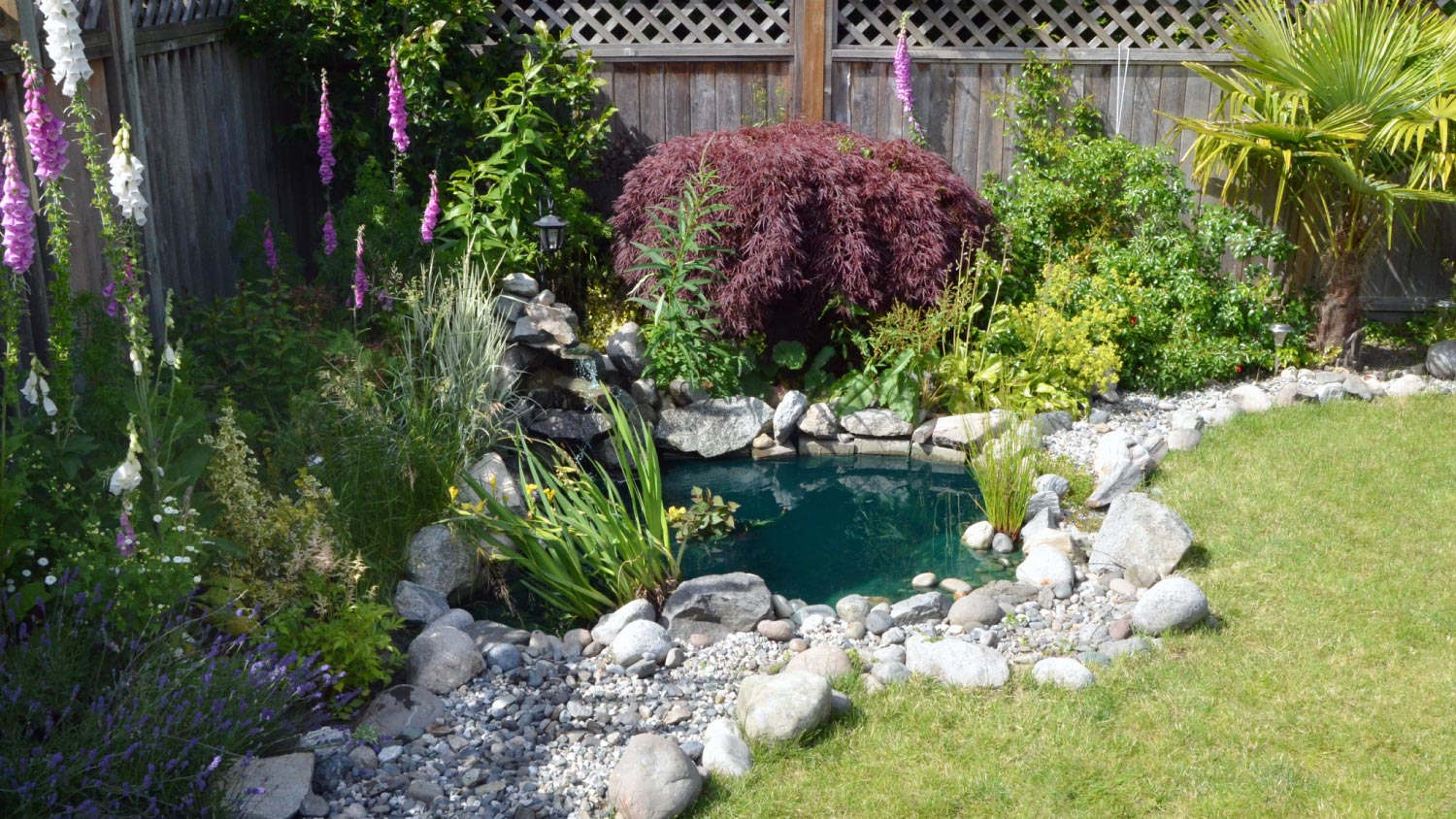
Get a detailed breakdown of pond dredging costs, including average prices, cost factors, and tips to help homeowners budget for their pond maintenance project.
The average cost to install a pondless waterfall is $7,000, with most homeowners spending between $4,000 and $10,000. Costs depend on size, materials, labor, and custom features.
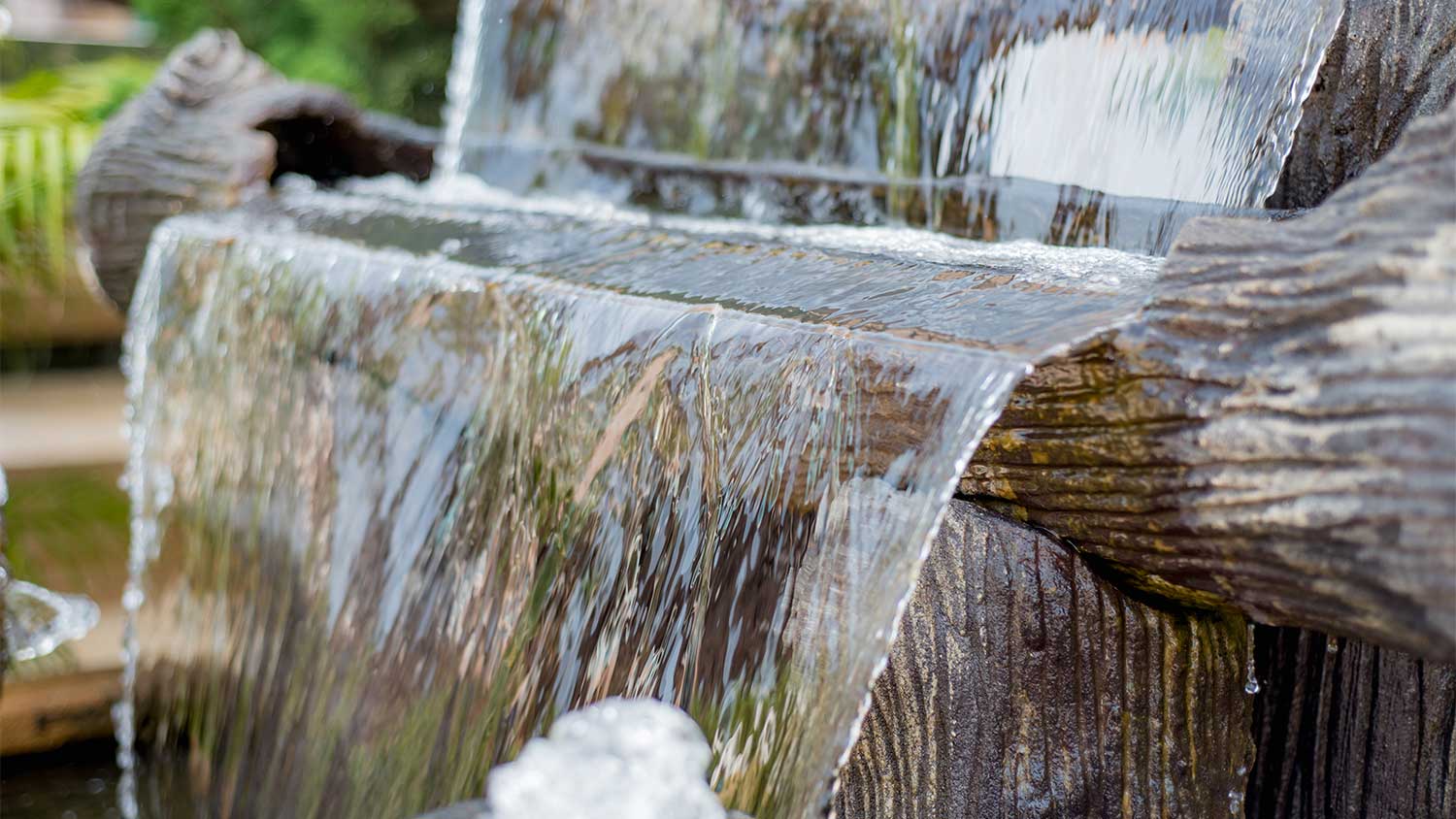

Installing a pondless waterfall means adding a self-contained water feature that recirculates water without a standing pond.
The main cost drivers include project size, materials, site prep, and extra features like lighting or boulders.
A well-designed pondless waterfall can add value to your property and create a beautiful, low-maintenance focal point.
Professional installation helps prevent leaks or drainage issues, protecting your investment.
Permitting and site accessibility can increase total expenses, so it’s smart to review local requirements before starting.
This article was created using automation technology and thoroughly fact-checked and edited by an Angi Editor in accordance with our AI policy.
On average, homeowners pay $7,000 to install a pondless waterfall, with most prices ranging from $4,000 to $10,000 depending on project size and complexity. Smaller, basic installations may cost less, while larger or custom designs can exceed $15,000. Pricing is typically based on a project, rather than a square foot.
A pondless waterfall is a great way to enjoy the sights and sounds of running water without the upkeep of a full pond. This guide breaks down what affects the price, what’s included, and how you can make the most of your investment.
The size of your pondless waterfall is the single biggest factor in determining your overall cost. Larger waterfalls require more materials, labor, and site preparation, which increases the price. The length, width, and height of the waterfall shape the total cost, as well as the water flow rate and the size of the underground reservoir. Expanding the size later or scaling back your design will also affect both the upfront and ongoing costs.
Standard size categories include:
Small: Compact features, often under six feet in length, with a simple rock arrangement and minimal landscaping.
Medium: Around six to 12 feet long, with more pronounced drops, moderate landscaping, and larger reservoirs.
Large: Over 12 feet, with multiple cascades, custom stonework, extensive landscaping, and high water flow.
Water flow rate (measured in gallons per hour) and reservoir size both impact the cost of the pump, liner, and excavation. More powerful pumps and bigger reservoirs lead to higher expenses for materials and energy use.
| Waterfall Size | Description | Average Installed Cost |
|---|---|---|
| Small | Up to 6 feet long, simple design, minimal landscaping | $4,000–$7,000 |
| Medium | 6 to 12 feet long, moderate drop, enhanced landscaping | $7,000–$10,000 |
| Large | Over 12 feet, multi-tiered, custom stonework, major landscaping | $10,000–$15,000+ |
The type of pondless waterfall you choose has a significant influence on both the upfront and long-term costs. You can select from standard kits, custom designs, or modular systems, and choose between natural stone or pre-cast materials. DIY kits cost less but require more hands-on work and skill. Professionally installed systems come with added peace of mind, warranties, and custom options.
The waterfall’s style also impacts cost—cascading and tiered options are more labor-intensive and require more materials than a simple stream-style waterfall.
| Type | Description | Pros | Cons |
|---|---|---|---|
| Standard kit | Pre-packaged, includes pump, liner, reservoir | Easy to install, predictable cost | Limited customization, basic look |
| Custom design | Tailored to site, unique features, and layout | Matches the landscape, high curb appeal | Higher cost, longer install time |
| Natural stone | Uses real rock and boulders | Authentic look, durable | Heavy, higher labor costs |
| Pre-cast/modular | Man-made, interlocking pieces | Lightweight, flexible layout | May lack natural appearance |
| DIY kit | Homeowner-installed, basic materials | Saves on labor | Risk of errors, no warranty |
Where you live affects the cost to install a pondless waterfall. Labor and material rates are higher in some regions, especially in urban or high-demand markets. In rural areas, rates may be lower, but delivery fees for materials could be higher. Local climate also plays a role—areas with freezing winters need extra insulation or freeze protection, which can add to the price. Local supply and demand, as well as contractor availability, may also influence your final bill.
The specific installation site on your property also impacts the cost. Front yards, backyards, and sloped or hard-to-reach areas may all require different levels of site prep and accessibility, which can increase labor hours and equipment rental fees. If your water or electrical supply is far from the planned waterfall location, expect additional expenses for trenching or wiring.
Many elements beyond size and type influence how much it costs to install a pondless waterfall. Let’s walk through the most important cost factors.
Professional installation commonly involves a landscape contractor or a water feature specialist. Labor rates range from $50 to $150 per hour, and labor can account for 30% to 60% of your project’s total cost. In areas with higher living costs, labor pricing trends toward the top of this range. More complex or difficult sites require more hours, which increases the labor bill.
Some municipalities require permits to install a pondless waterfall, especially for large features or those connected to electrical systems. Permit fees typically range from $50 to $300, depending on your location. Inspections may add more costs. Contractors often handle permitting, but always confirm who is responsible before starting.
Upgrades and customizations can add both beauty and expense. Common add-ons include:
LED, solar, or underwater lighting for nighttime enjoyment
Decorative boulders, rocks, or stonework for a natural look
Aquatic plants and landscape integration
Automatic fill systems, timers, or remote controls
Fish-safe or pet-safe materials and designs
Each feature can add anywhere from $200 to $2,500 to your total project cost.
There are several additional factors that can affect your total bill, including:
Custom shapes or multi-tiered designs increase complexity and price.
Site preparation, including grading, excavation, and debris removal, requires additional time and labor.
Delivery of materials and equipment rental can add hundreds to the bill.
Cleanup and restoration of the area after installation are often billed separately.
Custom design fees, including 3D renderings, may range from $300 to $1,000.
Some local authorities require inspections, which may carry fees.
Beyond installation, other expenses can affect your total investment in a pondless waterfall.
Manufacturer or installer warranties often cover pumps, liners, and workmanship for one to five years. Purchasing an extended warranty might add $100 to $500 to your bill, but it can help reduce long-term repair costs.
Running your waterfall pump and lighting uses electricity. Expect to pay $10 to $30 per month in energy costs, or around $120 to $360 per year, depending on pump size and run time. Water loss from evaporation or splash-out may require periodic refilling, but overall water usage is modest. Seasonal startup and winterizing services, where needed, cost $100 to $300 per year.
Routine water feature maintenance includes cleaning debris, checking the pump and filter, and inspecting for leaks. Homeowners who handle these tasks themselves can keep costs minimal, but professional maintenance services run $150 to $400 per visit. Replacement pumps or liners may be needed every five to ten years, at a cost of $200 to $800.
Pondless waterfalls are generally safer than open ponds, but it’s wise to check if your homeowners' insurance covers water features. Adding coverage or liability protection can cost between $25 and $100 per year.
Deciding whether to take on this project yourself or bring in a professional affects both your budget and project outcome.
DIY kits range from $1,000 to $4,000, depending on the size and materials used. You’ll need basic tools like shovels, wheelbarrows, and possibly a small excavator, which can be rented for $100 to $300 per day. By handling the work yourself, you save on labor, but you’ll need the right skills and at least a weekend (or longer) to complete the project safely. Risks include leaks, improper grading, or pump issues if the installation is not done correctly.
A professional installation package typically includes site prep, all materials, labor, permits, and cleanup. Hiring a professional brings expertise, faster installation, and warranty protection. The cost is higher—often double or triple the DIY kit price—but you gain peace of mind and a polished, long-lasting result.
For example, a medium-sized DIY kit might total $3,500, while a similar pro-installed waterfall could cost $8,000. Consider hiring a local water feature pro if your project is large, on a sloped site, or if you want custom features and a warranty.
Eventually, your pondless waterfall may need repairs or a complete replacement. Understanding when to repair or replace is important for managing long-term costs.
Common repairs include fixing pump failures, liner leaks, or clogged filters. If your system is under warranty, repairs should be minimal in cost. If the waterfall is several years old or has recurring issues, replacement can be more cost-effective, especially if repairs approach half the price of a new system (the “50% rule”). Age and overall condition, plus warranty status, should guide your decision.
Minor repairs, such as replacing a pump or fixing a leak, can cost between $200 and $800. Full replacement of a pondless waterfall, including removal and new installation, ranges from $6,000 to $15,000 or more. Newer systems with quality components tend to last longer and require fewer repairs, providing better long-term value.
Adding a pondless waterfall can improve your home’s curb appeal and outdoor living experience. While the exact return on investment (ROI) varies, outdoor water features can provide an estimated ROI of 20% to 50% of the project cost, especially when professionally installed and well-maintained. A pondless waterfall stands out from other landscaping upgrades by being safer, more efficient, and easier to care for than traditional ponds.
Factors like your region, the feature’s quality, and how well it’s maintained all influence ROI. Beyond financial value, you gain a tranquil, attractive space that’s safe for children and pets, energy-efficient, and visually appealing year-round.
You can manage your budget by making smart decisions throughout your project. Consider these strategies:
Choose a standard kit instead of a custom design.
Limit size or complexity to fit your budget.
Source local materials to reduce delivery costs.
Install during off-peak seasons for potential discounts.
Get multiple quotes from qualified contractors.
Handle some site prep or landscaping tasks yourself.
Opt for energy-efficient pumps and lighting to lower operating costs.
Maintain your waterfall regularly to avoid costly repairs.
Home is the most important place on earth, which is why Angi has helped more than 150 million homeowners transform their houses into homes they adore. To help homeowners with their next project, Angi provides readers with the most accurate cost data and upholds strict editorial standards. We extensively research project costs to develop the pricing data you see, so you can make the best decisions for you and your home. We rely on reputable sources, including the U.S. Bureau of Labor Statistics, academic journals, market studies, and interviews with industry experts—all to ensure our prices reflect real-world projects.
Want to help us improve our cost data? Send us a recent project quote to [email protected]. Quotes and personal information will not be shared publicly.
From average costs to expert advice, get all the answers you need to get your job done.

Get a detailed breakdown of pond dredging costs, including average prices, cost factors, and tips to help homeowners budget for their pond maintenance project.

Maintaining your backyard pond keeps it clean and in good condition. Learn how much pond maintenance costs and what factors can affect the price.
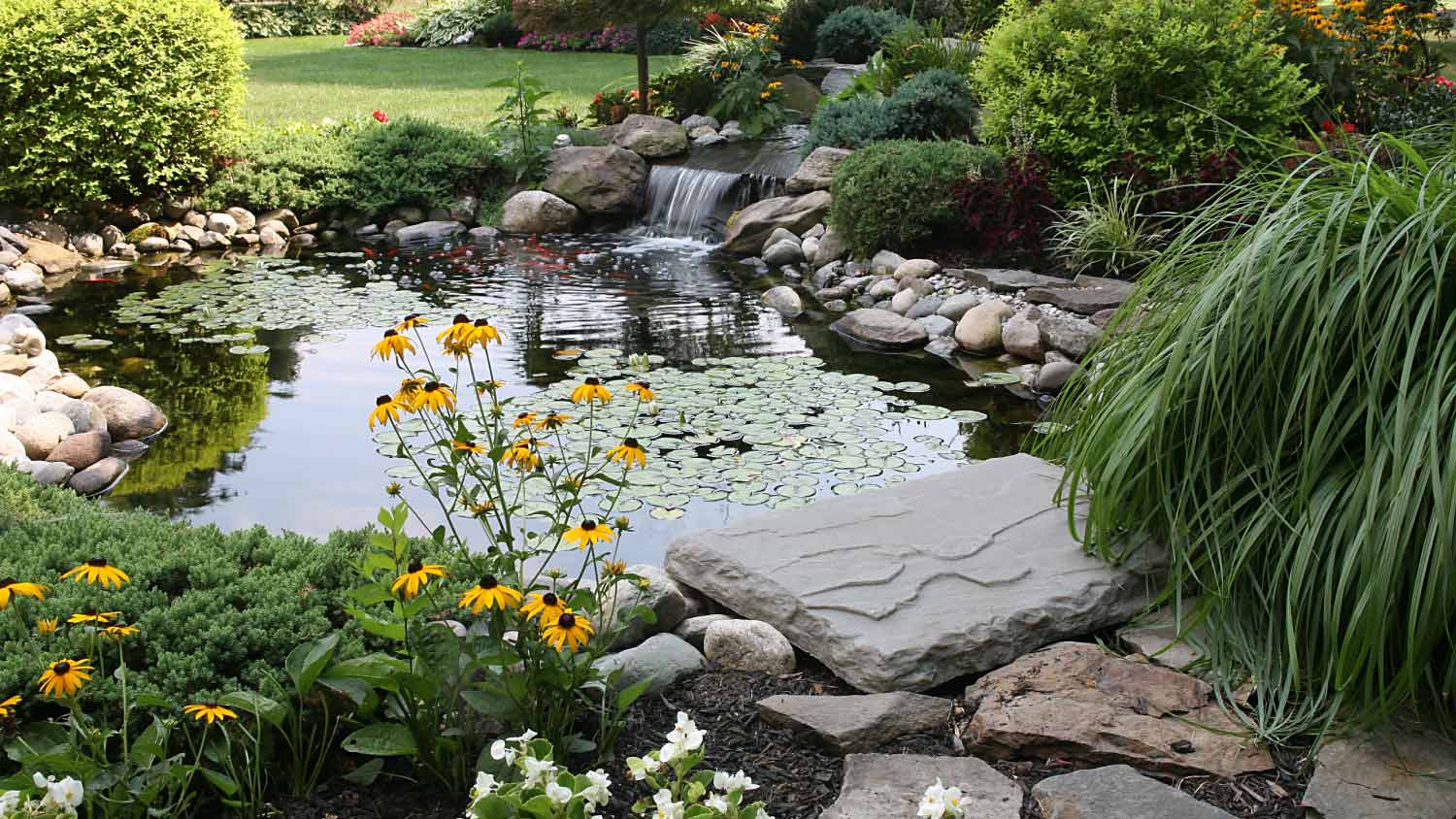
Discover the cost to install a fountain in your pond, including average prices, key cost factors, and tips to save money on your pond fountain installation.

A backyard oasis could be just a few steps away. Get koi pond ideas to inspire your own backyard water landscaping and answers to commonly asked questions.
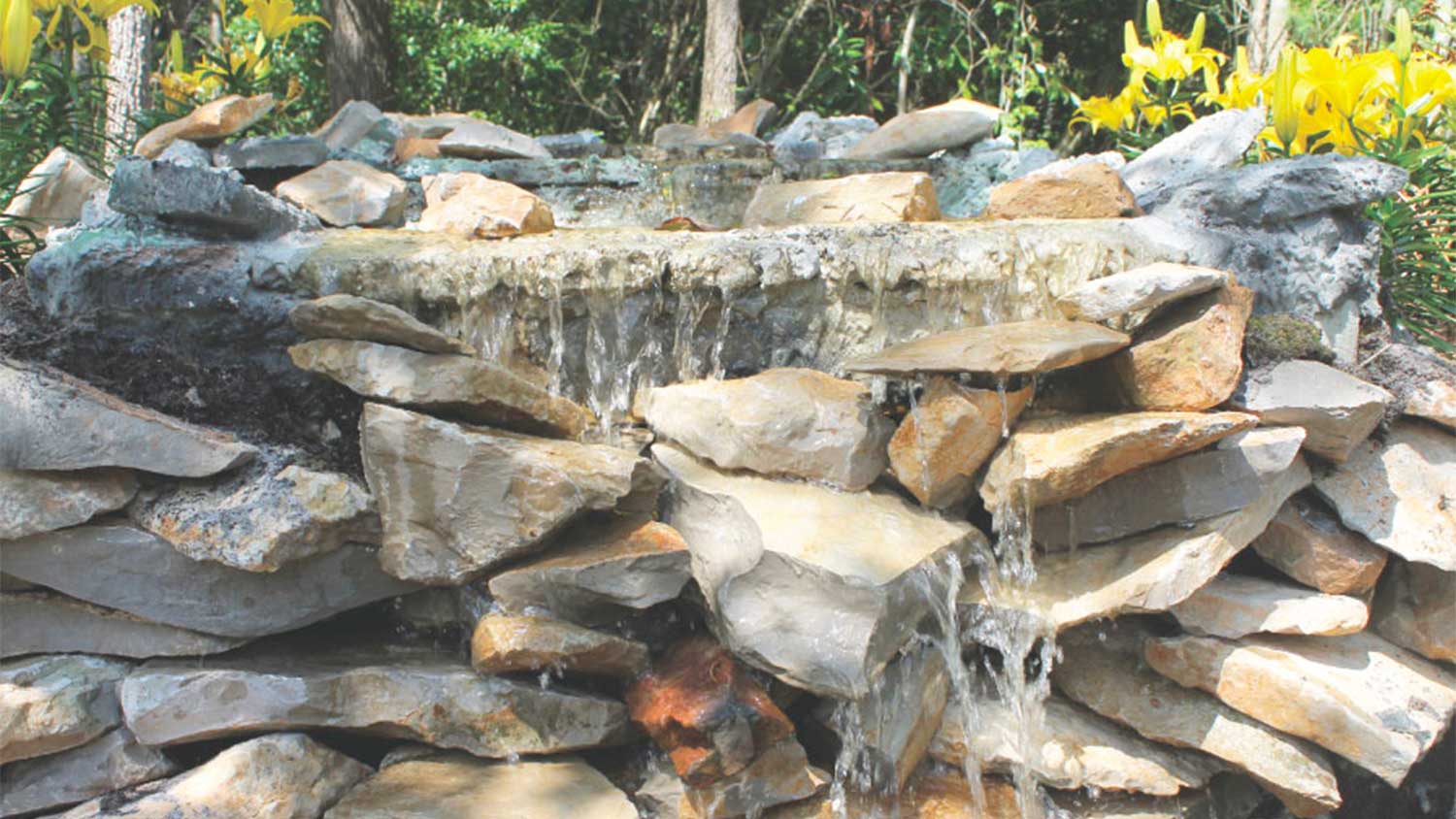
Outdoor water feature ideas are just as unique as your backyard itself. Check out how a waterfall, fountain, or koi pond can reimagine your property.
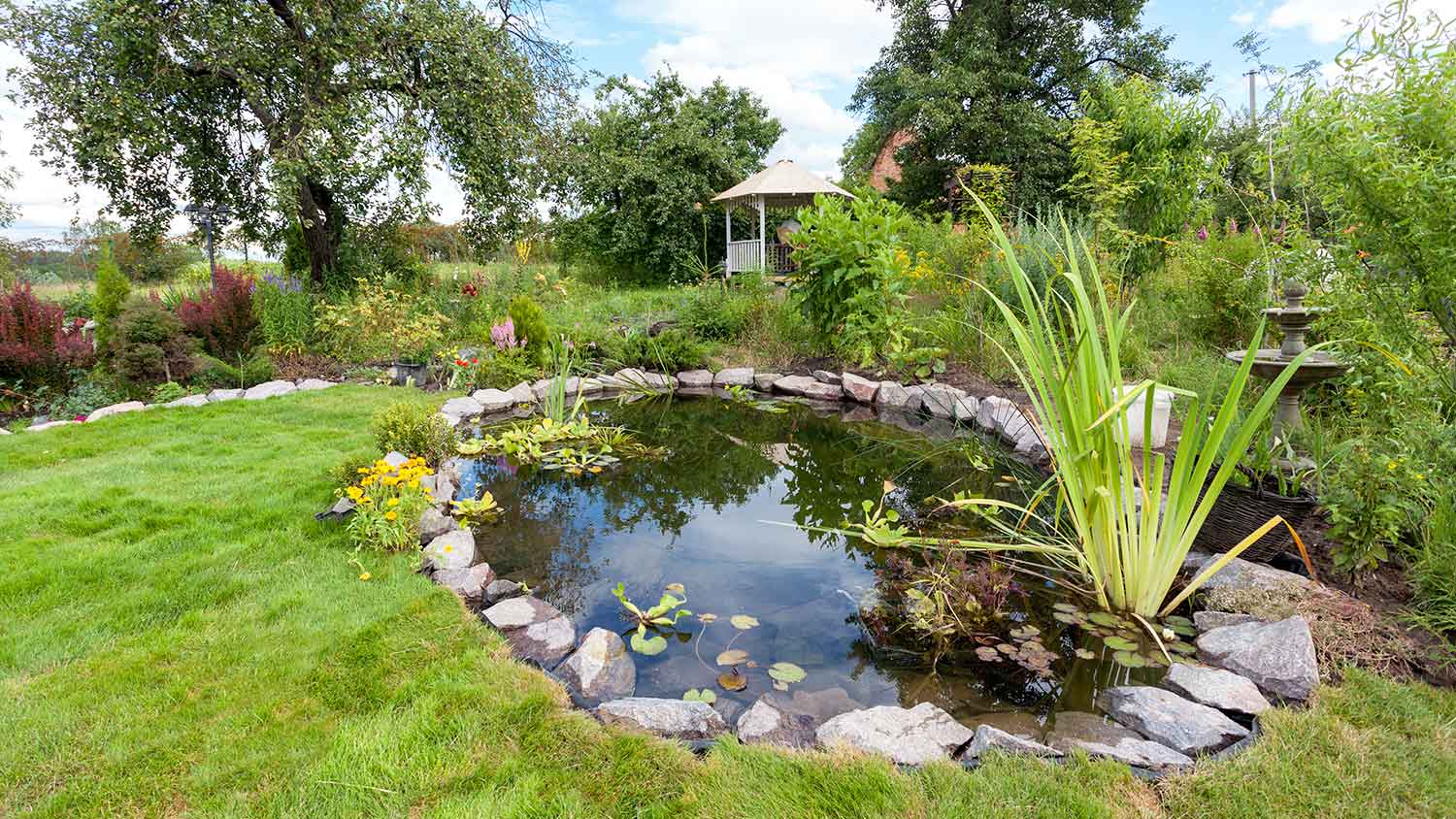
How much does a pond liner cost? Get detailed price breakdowns, installation factors, and tips to save on your pond liner project.